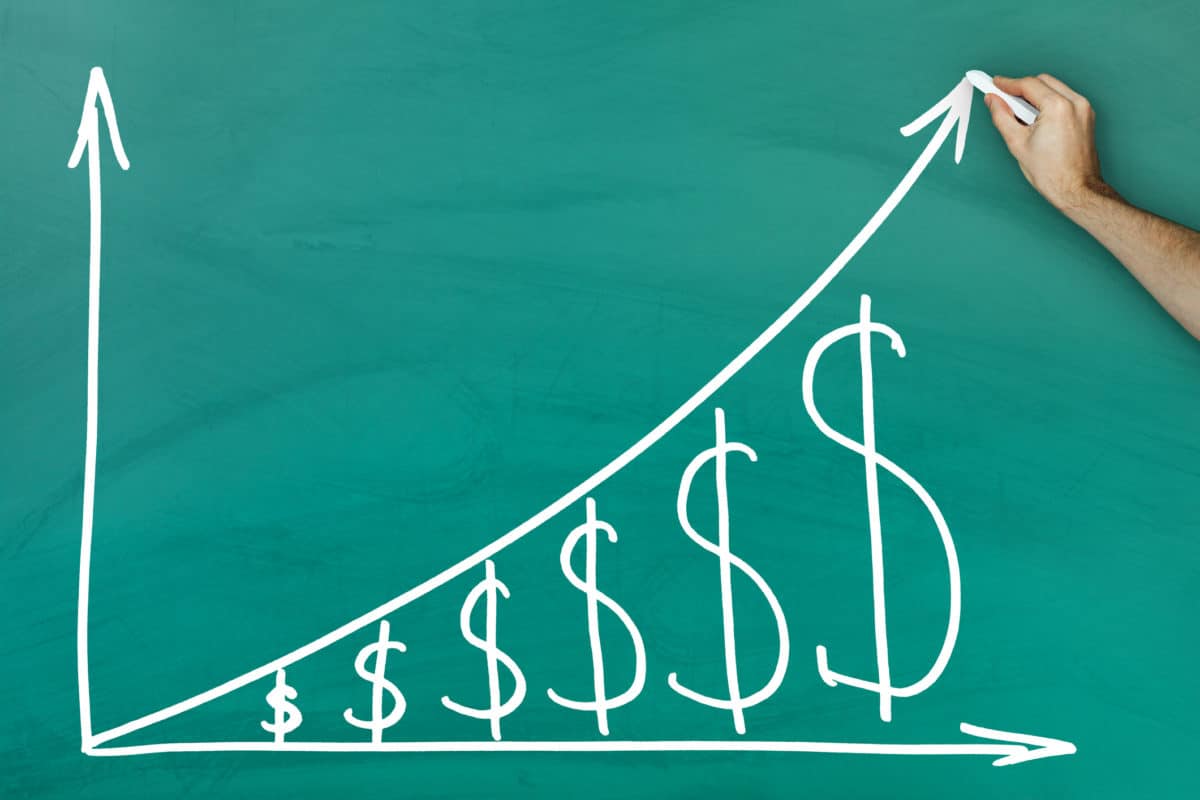Canadians are using their self-directed Tax-Free Savings Account (TFSA) and Registered Retirement Savings Plan (RRSP) to build investment portfolios that will provide income along with government and company pensions in retirement.
One popular strategy for creating retirement wealth involves buying top TSX dividend stocks and using the distributions to acquire more shares. This harnesses a compounding process that can turn relatively modest initial investments into large savings over time.
Power of compounding
Each time a dividend payment is used to buy new shares, the next dividend payment gets larger, and depending on the movements of the share price, can buy even more stock. The snowball effect takes time to get going, but the long-term impact on a portfolio can be substantial.
The strategy takes advantage of market corrections to buy new shares at cheaper prices. Many companies also offer a discount of up to 5% on the new stock that is purchased using the dividend payments. The dividend-reinvestment plan (DRIP) helps businesses retain cash flow that can be used for growth initiatives. Investors can usually direct their online broker to participate in the DRIP.
The top stocks to consider are ones that have long track records of dividend growth.
BCE
BCE (TSX:BCE) raised its dividend by at least 5% in each of the past 15 years. The stock is down considerably from the 2023 high, now trading near $50 per share compared to $65 in May.
BCE’s media group is struggling with a drop in advertising spending across the television and radio assets. The digital media platforms are performing better. BCE announced staff cuts earlier this year, as it adjusts to the current headwinds.
Despite the challenges in the media operations, BCE is still on track to generate higher operating revenue and a jump in free cash flow in 2023 compared to last year, supported by the strength of the core mobile and internet services.
Investors who buy BCE stock at the current level can get a 7.7% dividend yield. A $10,000 investment in BCE just 20 years ago would be worth about $46,000 today with the dividends reinvested.
TD Bank
TD (TSX:TD) trades near $79.50 at the time of writing compared to $93 in February and $108 in early 2022. The drop has occurred, as investors worry that steep rate hikes by the Bank of Canada and the United States Federal Reserve that are designed to cool off the economy and lower inflation could be too aggressive and will send the economy into a deep recession.
If unemployment jumps, there could be a wave of loan defaults as people with too much debt are unable to cover their payments. TD has large retail banking operations in Canada and the United States. The Canadian residential mortgage portfolio is one segment investors are watching.
TD is increasing its provision for credit losses (PCL), and some pain on the loan book is expected. However, the overall loan portfolio looks solid, and TD remains a very profitable bank. The company has a large capital cushion to help it ride out any turbulence and is positioned well to benefit from long-term economic growth in the U.S. and Canada.
TD’s compound annual dividend-growth rate is about 10% over the past 25 years. Investors who buy TD stock at the current price can get a 4.8% dividend yield. Buying TD on big dips has historically proven to be a profitable move for patient investors. A $10,000 investment in TD stock 20 years ago would be worth about $85,000 today with the dividends reinvested.
The bottom line on top TSX dividend stocks
BCE and TD are good examples of stocks paying attractive dividends that should continue to grow. If you have some cash to put to work in a TFSA or RRSP, these stocks look cheap today and deserve to be on your radar.








